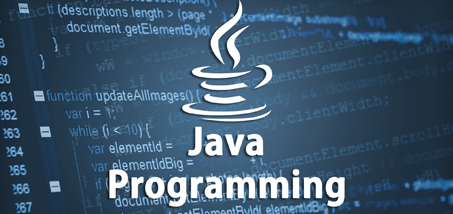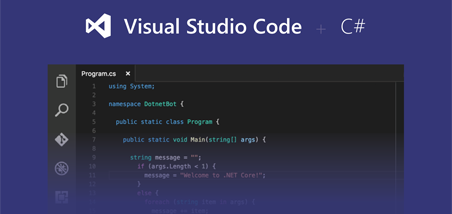Java Programming
JavaJava SE (Java
Platform, Standard Edition), masaüstü bilgisayarlarda ve sunucularda Java
uygulamaları geliştirilebilmesini sağlayan bir programlama platformudur.
Günümüz uygulamalarının gerektirdiği zengin kullanıcı arabirimi, çok yönlülük, performans,
taşınabilirlik ve güvenlik sağlar.
Bu
eğitim, Java Standard Edition 8 (Java SE 8) ile nesneye dayalı uygulamaların
tasarımında kullanılan API’leri
(Application Programming Interfaces) ve temel programlama dili özelliklerini
kapsar.
Bu eğitimde neler öğreneceksiniz?
• En son JDK
teknolojilerini kullanarak Java uygulamaları geliştirme
• Nesneye dayalı
programlama yeteneklerini geliştirme
• Güçlü Java
uygulamaları geliştirmek için programlama dili kullanımındaki en iyi
uygulamalar
• Java uygulamalarında
Lambda ifadelerini kullanma
• Koleksiyonları
kullanarak verileri işleme ve depolama
• Dosyaları, dizinleri
ve dosya sistemlerini işleme
• JDBC aracılığıyla
Standart SQL sorgularını kullanarak veritabanlarına bağlanma
•
Yüksek performanslı
çok iş parçacıklı uygulamalar oluşturma
Eğitim İçeriği
Java Platform Overview
•
Defining how the Java
language achieves platform independence
•
Defining how the Java
language continues to evolve
•
Differentiating
between the Java ME, Java SE, and Java EE Platforms
•
Evaluating Java
libraries, middle-ware, and database options
Java Syntax and Class Review
•
Using operators
•
Creating primitive
variables
•
Creating simple Java
classes
•
Using if-else and
switch statements
•
Creating and
manipulate strings
•
Iterating with loops:
while,do-while,for,enhanced for
•
Creating arrays
•
Using Java fields,
constructors, and methods
Encapsulation and Subclassing
•
Creating and use Java
subclasses
•
Using encapsulation
in Java class design
•
Overloading methods
•
Making classes
immutable
•
Modeling business
problems using Java classes
Overriding Methods, Polymorphism, and Static Classes
•
Using the instance of operator to compare object types
•
Using varargs to
specify variable arguments
•
Using access levels:
private, protected, default, and public
•
Overriding methods
•
Implementing the
singleton design pattern
•
Modeling business
problems by using the static keyword
•
Using upward and
downward casts
•
Using virtual method
invocation
Abstract and Nested Classes
•
Constructing abstract
Java classes and subclasses
•
Designing
general-purpose base classes by using abstract classes
•
Applying final
keyword in Java
•
Distinguish between
top-level and nested classes
Interfaces and Lambda Expressions
•
Defaulting methods
•
Defining a Java
interface
•
Anonymous inner
classes
•
Defining a Lambda
Expression
•
Extending an
interface
•
Choosing between
interface inheritance and class inheritance
Collections and Generics
•
Creating a collection
by using generics
•
Implementing an
ArrayList
•
Implementing a
HashMap
•
Implementing a Deque
•
Using the type
inference diamond to create an object
•
Creating a custom
generic class
•
Implementing a
TreeSet
•
Ordering collections
Collections Streams, and Filters
•
Describing the Stream
interface
•
Calling an existing
method using a method reference
•
Chaining multiple
methods together
•
Filtering a
collection using lambda expressions
•
Defining pipelines in
terms of lambdas and collections
•
Iterating through a
collection using lambda syntax
•
Describing the
Builder pattern
Lambda Built-in Functional Interfaces
•
Using primitive
versions of base interfaces
•
Using binary versions
of base interfaces
•
Listing the built-in
interfaces included in java.util.function
•
Core interfaces – Predicate, Consumer, Function, Supplier
Lambda Operations
•
Extracting data from
an object using map
•
Describing the
Optional class
•
Sorting a stream
•
Describing lazy
processing
•
Describing the types
of stream operations
•
Grouping and
partition data using the Collectors class
•
Saving results to a
collection using the collect method
Exceptions and Assertions
•
Recognizing common
exception classes and categories
•
Autoclose resources
with a try-with-resources statement
•
Creating custom
exceptions
•
Using the catch,
multi-catch, and finally clauses
•
Defining the purpose
of Java exceptions
•
Using the try and
throw statements
•
Testing invariants by
using assertions
Java Date/Time API
•
Working with dates
and times across time zones
•
Combining date and
time into a single object
•
Creating and manage
date-based events
•
Applying formatting
to local and zoned dates and times
•
Creating and manage
time-based events
•
Managing changes
resulting from daylight savings
•
Defining and create
timestamps, periods and durations
I/O Fundamentals
•
Writing and read
objects using serialization
•
Using streams to read
and write files
•
Read and write data
from the console
•
Describing the basics
of input and output in Java
File I/O (NIO.2)
•
Using the Files class
to check, copy, move
or delete a file or directory
•
Using the Path
interface to operate on file and directory paths
•
Using Stream API with
NIO2
Concurrency
•
Creating worker
threads using Runnable and Callable
•
Describing operating
system task scheduling
•
Using an
ExecutorService to concurrently execute tasks
•
Using the
java.util.concurrent collections
•
Identifying potential
threading problems
•
Using monitor locks
to control the order of thread execution
•
Using synchronized
and concurrent atomic to manage atomicity
The Fork-Join Framework
•
The need for
Fork-Join
•
RecursiveTask
•
Work stealing
• Parallelism
Parallel Streams
•
Listing the key
performance considerations for parallel streams
•
Reviewing the key
characteristics of streams
•
Defining reduction
•
List the key
assumptions needed to use a parallel pipeline
•
Calculating a value
using reduce
•
Describing the
process for decomposing and then merging work
•
Describing how to
make a stream pipeline execute in parallel
•
Describing why reduction
requires an associative function
Database Applications with JDBC
•
Connecting to a
database by using a JDBC driver
•
Specifying JDBC
driver information externally
•
Performing CRUD
operations using the JDBC API
•
Defining the layout
of the JDBC API
•
Submitting queries
and get results from the database
Localization
•
Building a resource
bundle for each locale
•
Describing the
advantages of localizing an application
•
Calling a resource
bundle from an application
•
Changing the locale
for a resource bundle
•
Defining what a
locale represents
•
Read and set the
locale by using the Locale object
Ön Koşullar
Java Temel bilgisine sahip olmak ya da Java Essentials eğitimini almış olmak gerekmektedir.






